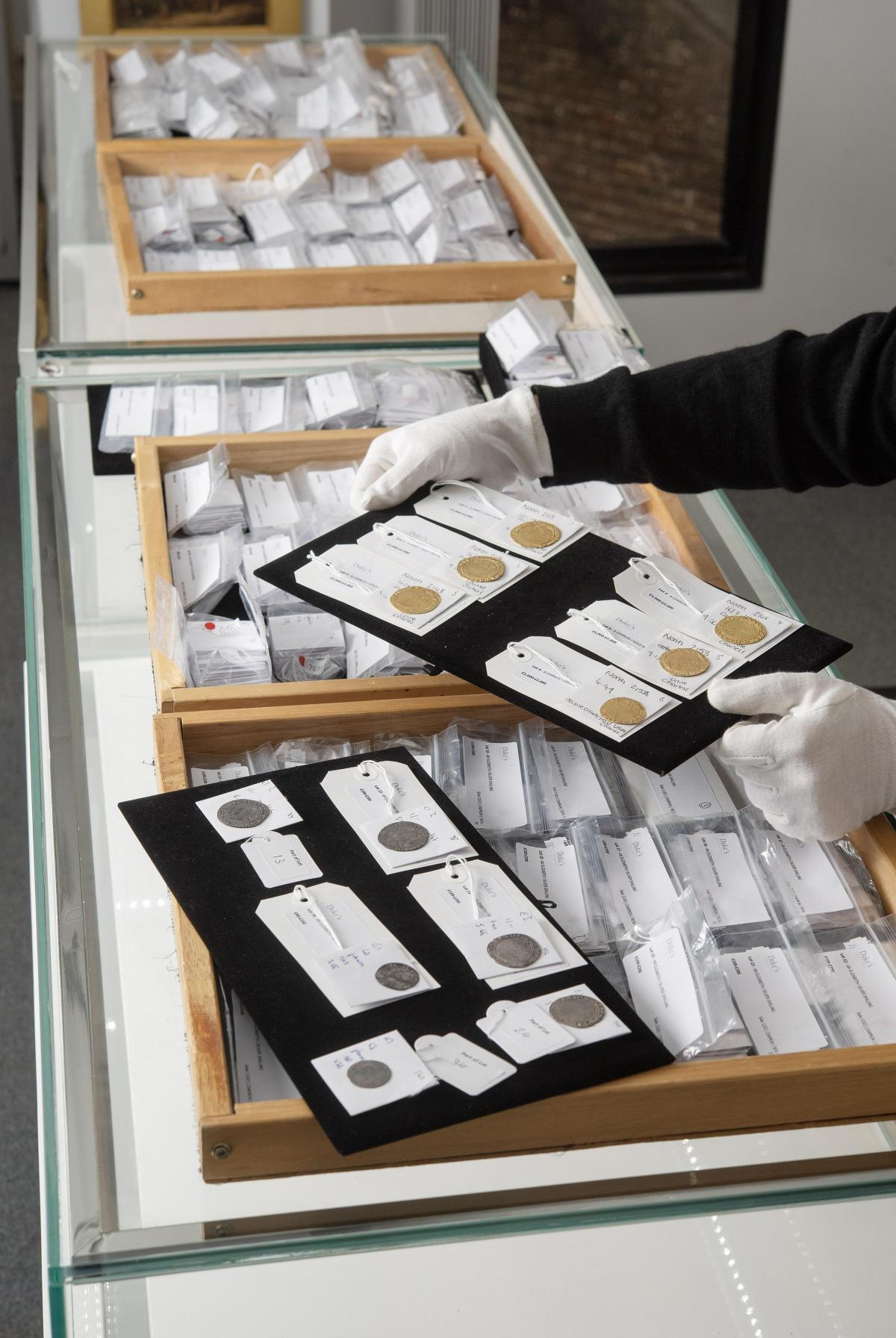A couple renovating the kitchen of a 17th century cottage near Bridport were stunned when they found a £35,000 coin hoard hidden under the floor.
Betty and Robert Fooks had recently bought the property when they carried out work to remove the kitchen's concrete floor to create more ceiling height.
Mr Fooks dug down 2ft with a pickaxe by torchlight and unearthed a smashed glazed pottery bowl full to the brim with 400-year-old coins.
The agricultural engineer counted 1,029 of the coins which included gold King James I and King Charles I examples.

The hoard is believed to have been buried between 1642 and 1644 during the English Civil War for safekeeping.
The couple reported it to the local finds liaison officer and it was then to the British Museum for cleaning and identification.
The coins are now coming up for sale at Duke's Auctioneers of Dorchester.
The country cottage is part of a smallholding at South Poorton Farm, in a hamlet near Bridport.

Mrs Fooks, a 43-year-old NHS health visitor, said: "It is a 400 year old house so there was lots of work to do.
"We were taking all the floors and ceilings out and took it back to its stone walls.
"We decided to lower the ground floor to give us more ceiling height.
"One evening, I was with the children and my husband was digging with a pick axe when he called to say they've found something.
"He put all the coins in a bucket and brought them home to me.
"If we hadn't lowered the floor they would still be hidden there.
"It is amazing and fascinating (to find the hoard).
"I presume they were buried during the English Civil War and the person intended to retrieve them but never got the chance."

The hoard, which was discovered in October 2019, also contained Elizabeth I, Philip and Mary silver shillings and sixpences.
The most valuable coins are a James I gold laurel coin (1621-23) and Charles I gold unite coin (1626-27), which are both tipped to fetch £2,000.
The hoard has been split into almost 100 lots by Duke's Auctioneers.
Julian Smith, specialist at Duke's Auctioneers, said: "The cottage is situated in a small hamlet in west Dorset, and is a 17th century long-house.
"The property was purchased by the current owners in 2019 and they started an extensive renovation project.
"The modern concrete floor was removed and the floor dug down by nearly 2ft to prove greater height to the downstairs of the property.
"In some areas there were old flagstones under the concrete but the area the coins were found was bare earth.
"The coins were found by the owner whilst digging with a pickaxe by torchlight one late evening.
"The coins have been with the British Museum for identification and cleaning, and they feel the coins were deposited on one occasion around 1642-4."
The sale takes place on April 23.

















Comments: Our rules
We want our comments to be a lively and valuable part of our community - a place where readers can debate and engage with the most important local issues. The ability to comment on our stories is a privilege, not a right, however, and that privilege may be withdrawn if it is abused or misused.
Please report any comments that break our rules.
Read the rules here